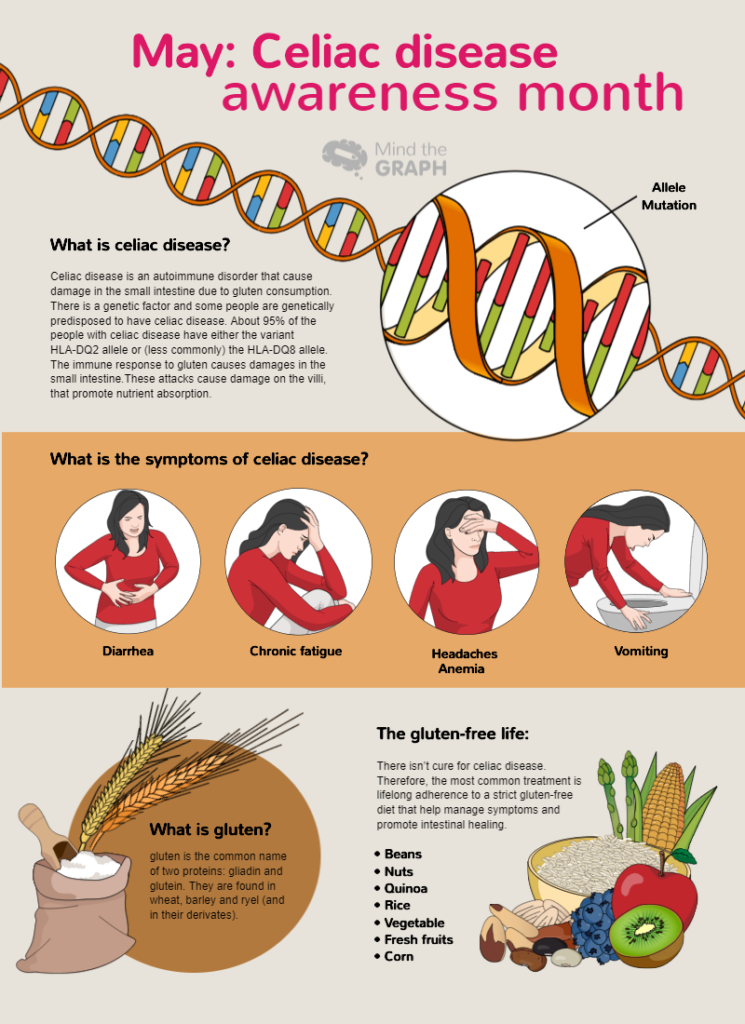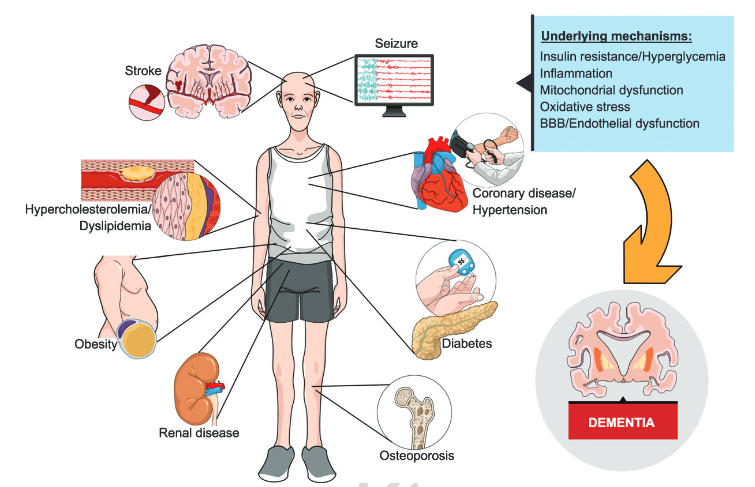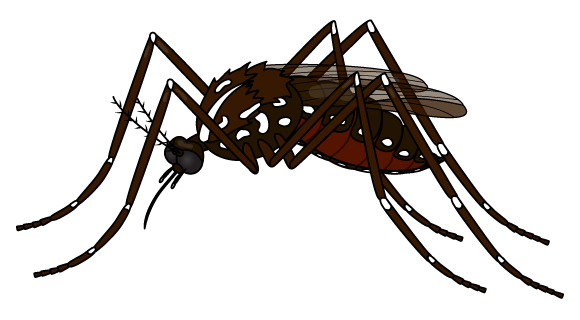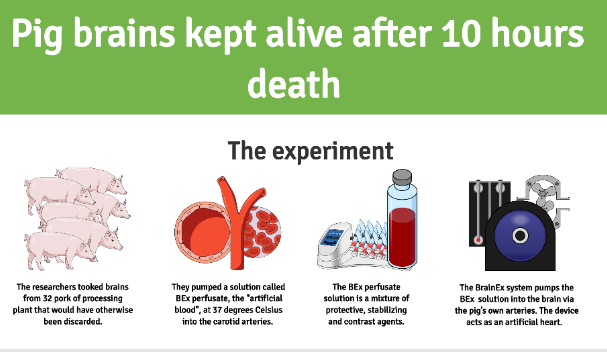Mai er cøliaki-bevissthetsmåneden, en dato for å rette oppmerksomheten mot cøliaki. Forskere fra hele verden studerer cøliaki hver eneste dag i jakten på bedre livskvalitet for pasientene. Og mye har allerede blitt oppdaget.
Therefore, in addition to research and solid data, good communication between scientists, media and general people is important. Fake news, wrong or incomplete information can make life very much worse for those who have the disease or are in the diagnostic phase. We believe that good communication in science is very important for advances in scientific knowledge and in the well-being of the general population.
One way to improve science communication is to use of visual resources, as infographics, videos or graphical abstracts. You can show your data in a concise and beautiful way.
Teamet vårt har laget en infografikk for å vise informasjon om cøliaki, basert på vitenskapelig forskning.
Først og fremst, hva er cøliaki?
Det er en autoimmun lidelse som forårsaker skader i tynntarmen på grunn av gluteninntak. Det er en genetisk faktor, og noen mennesker er genetisk disponert for å få cøliaki.
Omtrent 95% av personene med cøliaki har enten varianten HLA-DQ2-allelet eller (mindre vanlig) HLA-DQ8-allelet. Omtrent 20-30% av personene uten cøliaki har imidlertid også arvet en av disse allelene. Dataene tyder på at det trengs flere faktorer for at cøliaki skal utvikle seg, det vil si at det predisponerende HLA-risikoallelet er nødvendig, men ikke tilstrekkelig for å utvikle sykdommen.
When people with this disorder eat gluten (a protein found in wheat, rye and barley), there are an immune response by a reaction to gliadins and glutenins (gluten proteins) that attacks the small intestine cells . These attacks cause damage on the villi, that promote nutrient absorption. The damaged villi become shortened and eventually flatten out, so nutrients cannot be absorbed properly into the body.
Hva må endres hvis du har cøliaki?
Det finnes ingen kur mot cøliaki. Derfor er den vanligste behandlingen livslang overholdelse av en streng glutenfri diett som bidrar til å håndtere symptomene og fremme helbredelse av tarmen.
Hvorfor trenger vi en måned for bevissthet om cøliaki?
Det anslås at cøliaki rammer 1 av 100 mennesker på verdensbasis.
Det er millioner av mennesker som ikke har fått diagnosen. Mange av tegnene og symptomene er uspesifikke, noe som betyr at de kan forekomme ved mange ulike lidelser.
I gjennomsnitt stilles ikke diagnosen før 6 til 10 år etter at symptomene begynte. Dette er et problem på grunn av risikoen for langsiktige helsekomplikasjoner.
Noen mennesker har stille cøliaki, der de ikke har noen symptomer på lidelsen. Personer med stille cøliaki har imidlertid immunproteiner i blodet (antistoffer) som er vanlige ved denne sykdommen. De har også betennelsesskader i tynntarmen som kan påvises ved hjelp av en biopsi.
Hvis du er bekymret for å ha cøliaki, bør du gå til legen din. Bare en lege kan stille en riktig diagnose.

Abonner på nyhetsbrevet vårt
Eksklusivt innhold av høy kvalitet om effektiv visuell
kommunikasjon innen vitenskap.





